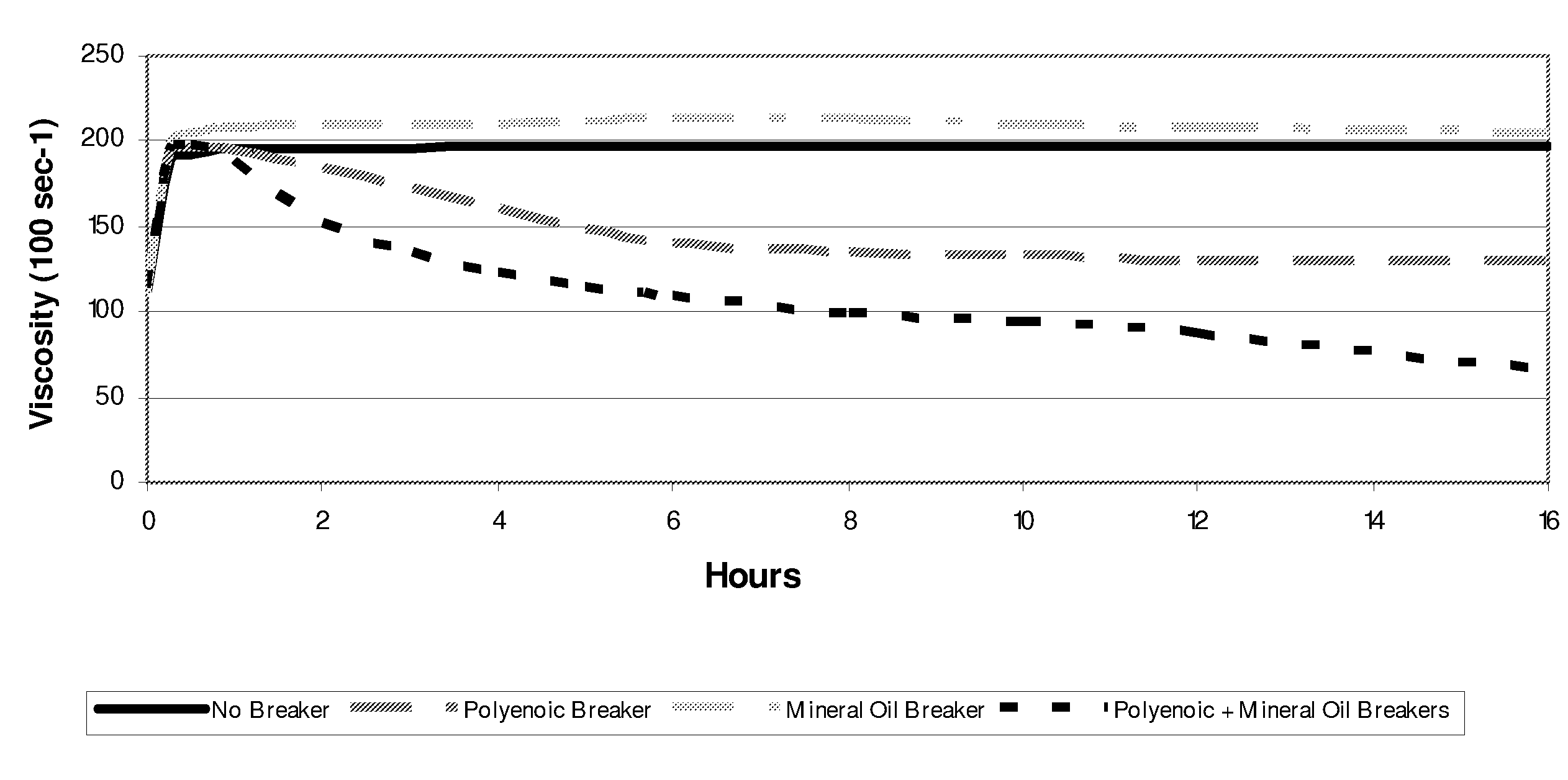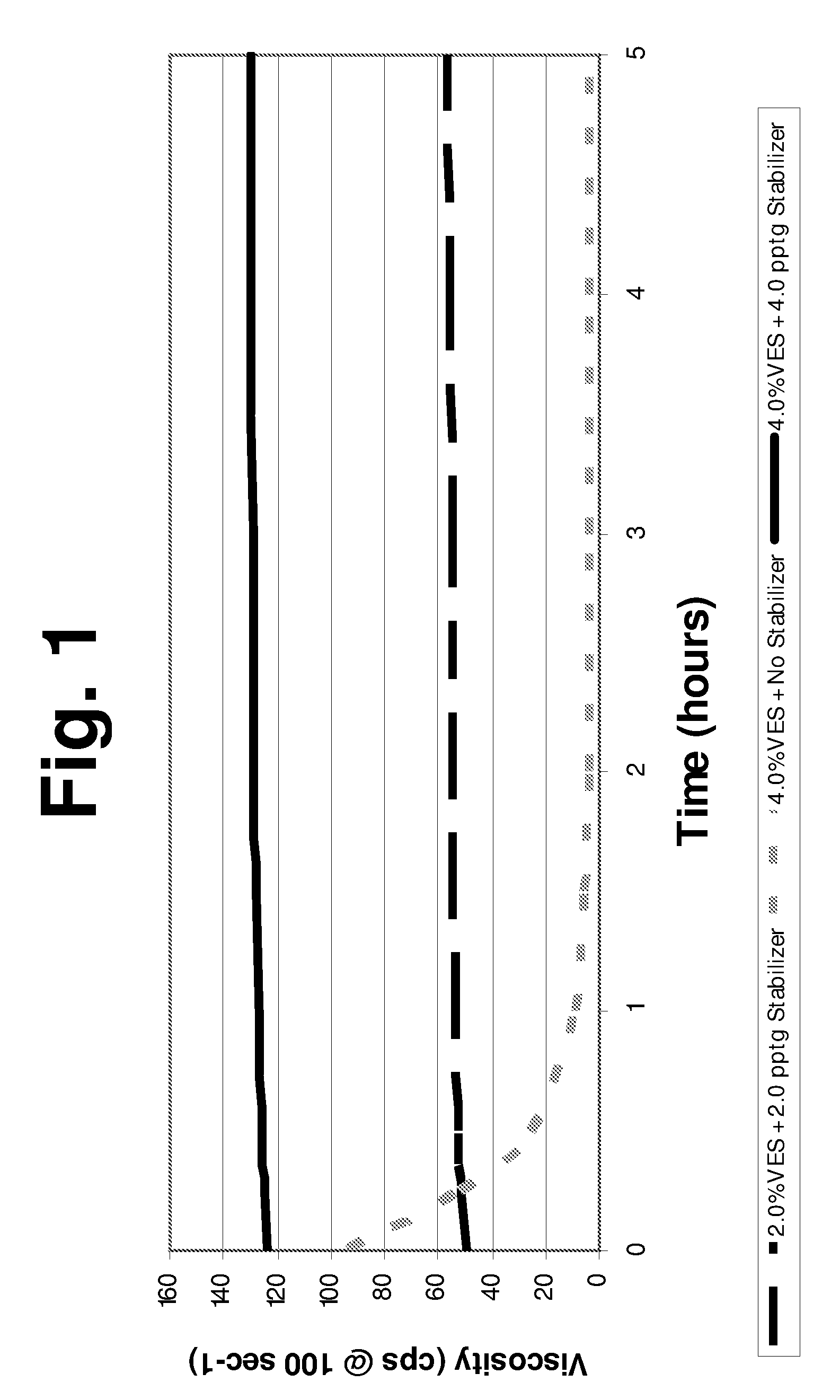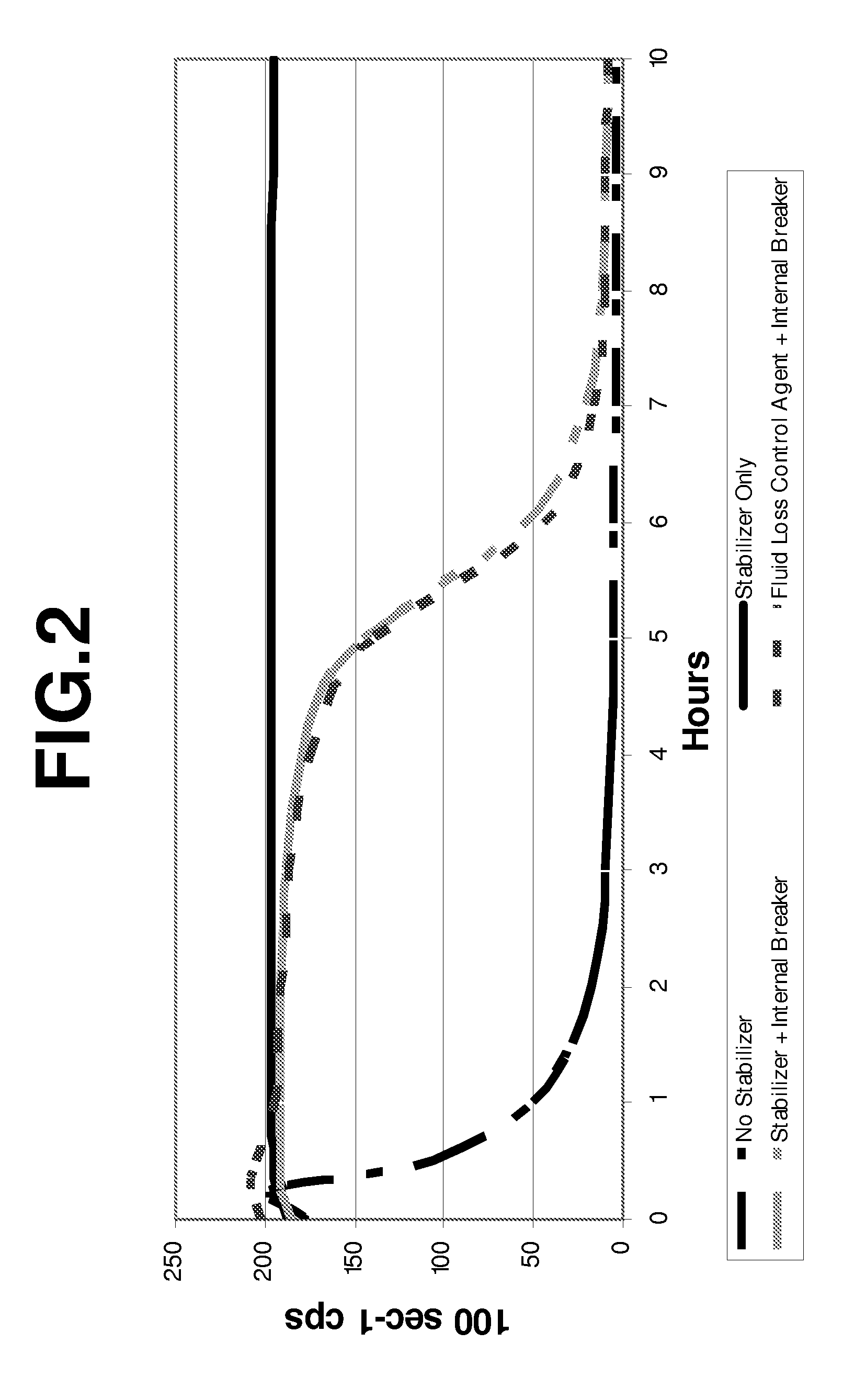Methods and compositions for fracturing subterranean formations
a technology of subterranean formations and compositions, applied in the field of aqueous gelled fluids, can solve the problems of reducing oil and gas production, affecting the recovery efficiency of hydrocarbons, and not being able to easily flow into the well, so as to reduce the viscosity of the treating fluid composition, increase the viscosity of water, and reduce the viscosity
- Summary
- Abstract
- Description
- Claims
- Application Information
AI Technical Summary
Benefits of technology
Problems solved by technology
Method used
Image
Examples
example 1
[0104]Shown in FIG. 1 is a graph of the viscosity of a VES gelled fluid, 14.2 pptg (1.7 kg / m3) CaCl2 / CaBr2 brine with 2% and 4% by volume (bv) WG-3L VES at 275° F. (135° C.) and having 2.0 and 4.0 pptg (0.24 and 0.48 kg / m3, respectively) VES-STA1 viscosity stabilizer, as a function of time. VES-STA1 viscosity stabilizer is available from Baker Oil Tools. Viscosity testing was performed on a Grace rheometer at 250° F. (121° C.) with 300 psi (2.1 MPa) pressure and 100 sec−1 shear. It may be seen that the fluid without a viscosity stabilizer lost essentially all of its viscosity over the course of the first hour. In contrast, the two fluids containing the VES-STA1 viscosity stabilizer essentially maintained a constant viscosity over the 5-hour test period. The stability of 2% VES at 275° F. (135° C.) is quite remarkable, compared to prior art VES fluid systems, and the 4% VES loading at 275° F. (135° C.) represents how less VES product can be surprisingly used at high temperature that ...
example 2
[0105]Shown in FIG. 2 is a graph of the viscosities of VES gelled fluids over time that have no high temperature stabilizer, 6.0 pptg (0.72 kg / m3) VES-STA 1 high temperature stabilizer, 6.0 pptg (0.72 kg / m3) VES-STA 1 high temperature stabilizer with 2.0 gptg Fish Oil 18:12TG (from Bioriginal Food & Science Corporation) internal breaker, and 10.0 gptg FLC-40L fluid loss control agent with 2.0 gptg Fish Oil 18:12TG internal breaker, mixed in 13.0 pptg (1.6 kg / m3) CaCl2 / CaBr2 brine with 4% by volume (bv) WG-3L VES at 250° F. (121° C.). The VES-STA1 and FLC-40L are available from Baker Oil Tools. Viscosity testing was performed on a Grace rheometer at 250° F. (121° C.) with 300 psi (2.1 MPa) pressure and 100 sec−1 shear. The data shows VES-STA 1 allows a very low VES loading to be used for fracturing at 250° F. (121° C.), and with an internal breaker present, the viscosity can be controllably reduced for faster and more complete VES fluid clean-up. The test with 10.0 gptg FLC-40L showe...
example 3
[0106]Shown in FIG. 3 is a graph of the viscosity of a VES gelled fluid over time that has 6.0 pptg (0.72 kg / m3) VE-42 (nano-sized ZnO) viscosity enhancer or temperature stabilizer with 2.0 gptg Fish Oil 18:12TG internal breaker mixed in 13.0 pptg (1.6 kg / m3)CaCl2 / CaBr2 brine with 4% by volume (bv) WG-3L VES at 250° F. (121° C.) and shear rate 100 1 / s. It may be seen that the internal breaker starts to be active in one hour, and the fluid viscosity reduces slowly.
PUM
| Property | Measurement | Unit |
|---|---|---|
| particle size | aaaaa | aaaaa |
| temperature | aaaaa | aaaaa |
| wt % | aaaaa | aaaaa |
Abstract
Description
Claims
Application Information
 Login to View More
Login to View More - R&D
- Intellectual Property
- Life Sciences
- Materials
- Tech Scout
- Unparalleled Data Quality
- Higher Quality Content
- 60% Fewer Hallucinations
Browse by: Latest US Patents, China's latest patents, Technical Efficacy Thesaurus, Application Domain, Technology Topic, Popular Technical Reports.
© 2025 PatSnap. All rights reserved.Legal|Privacy policy|Modern Slavery Act Transparency Statement|Sitemap|About US| Contact US: help@patsnap.com



